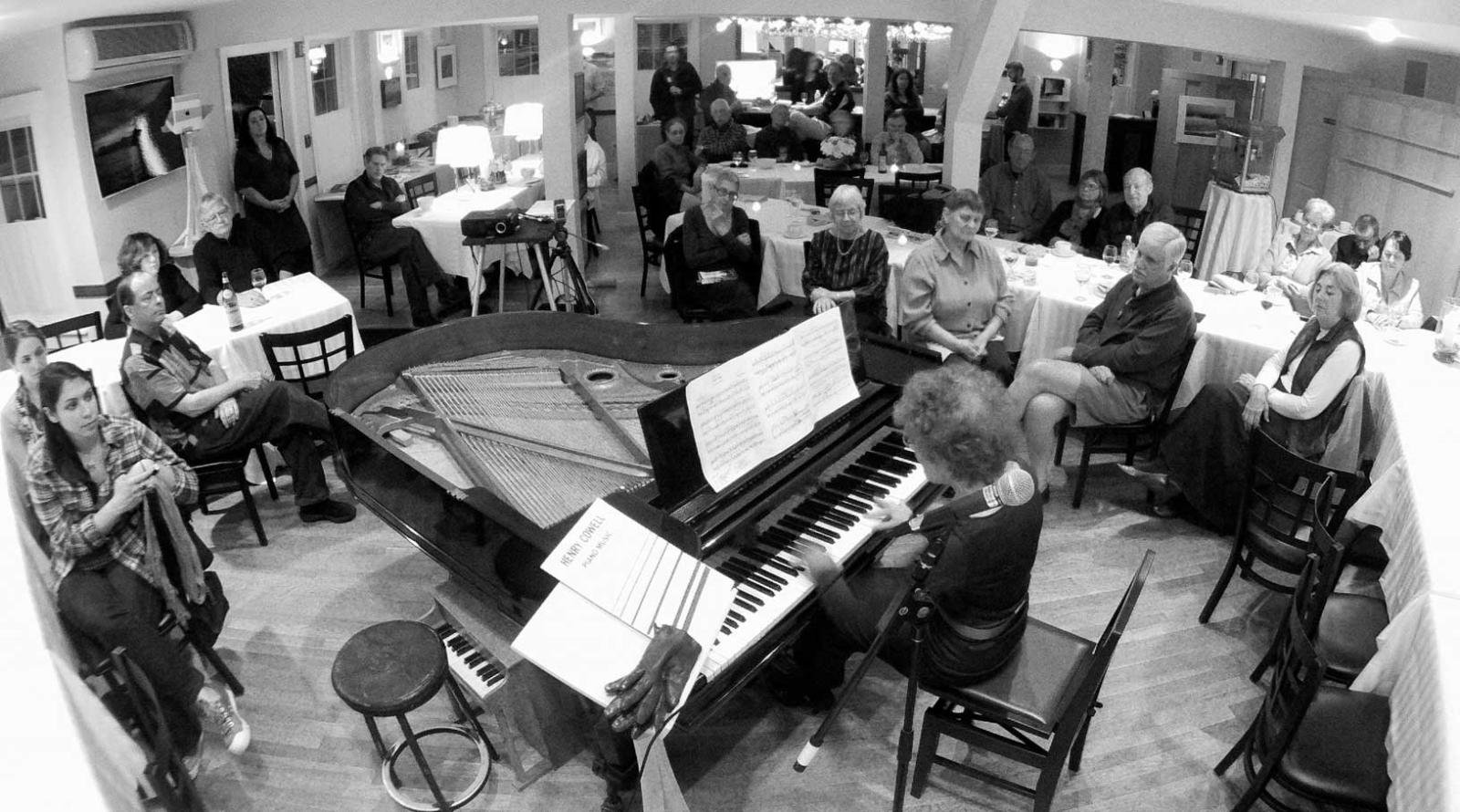Last Saturday night at the Chilmark Tavern, Dee Stevens, artistic director of the Martha’s Vineyard Chamber Music Society, and David Stanwood, pianist and inventor of a new system of piano tuning, performed for the Imagine Arts Festival put on by Marianne Goldberg and the Pathways Projects Institute.
The theme of the gathering was the celebration of the 100th birthday of John Cage, an American avant-garde composer who was deeply influenced by eastern religions and strived to incorporate the idea of randomness and chance in his compositions. He was also instrumental in the development of modern dance through his association with choreographer Merce Cunningham. A 1926 grand piano that had been “personally chosen for Andrew Mellon by Bruno Walter,” was brought in for the event by David Stanwood.
Ms. Stevens began the night with a bravura performance, laced with her own style of high-energy humor and irreverence.
“John Cage studied with Arnold Schoenberg,” Ms. Stevens told the audience. “He had a great musical education, he just didn’t use it.”
She played a piece by composer Dick Higgins, who studied with Mr. Cage, another piece called Aeolian Harp, in which the cover of the piano was removed so she could pluck the strings directly, and Sparks, a three minute composition that was so physically demanding she wore gloves to protect her hands. Perhaps her most popular performance was Cage’s Suite for a Toy Piano, plunked out, appropriately, on a child’s piano placed atop the grand piano.
For the John Cage piece known as 4’33’’ or Four minutes, thirty-three seconds, Mr. Stanwood asked that all the electrical appliances be turned off because the composition was “very soft.” Because the lights at the tavern are connected to the same circuit as the appliances, they went off too. Mr. Standwood then sat down on the piano bench, confronted the piano, and proceeded to play — absolutely nothing. The space slowly filled with whispering, shuffling feet, coughing, pinkletinks, the sound of traffic on State Road, and, from one person seated in the back of the room, the crunching of popcorn and slurping of wine.
Mr. Cage was interested in just this kind of thing — silence filled with the accidental music of random sound.
At the conclusion of the piece, Mr. Stanwood performed an improvisation of his own; playing notes with heavy reverberations then a long die-off, mixing blunted and clear tones, creating a chorus of sound only to be pinched off suddenly, and ending with a full throated melodic movement made even more moody by being played in the dark.
The experience was intense yet convivial, inspired by Marianne Goldberg’s concept of an art space that is as comfortable as a living room and where performers and audience meet as old friends and collaborators in the making of art.
Given that definition, and John Cage’s interest in the simple direct appreciation of sound, the person who slurped and chomped in the back of the room had also given a bravura musical performance.





Comments
Comment policy »